"Bird-other" IDs - Small Birds
-
 by
wilderzone
moderator
by
wilderzone
moderator
Smaller birds are not often captured very clearly by the camera traps, but some are distinctive, and common, enough to ID from the snaps.
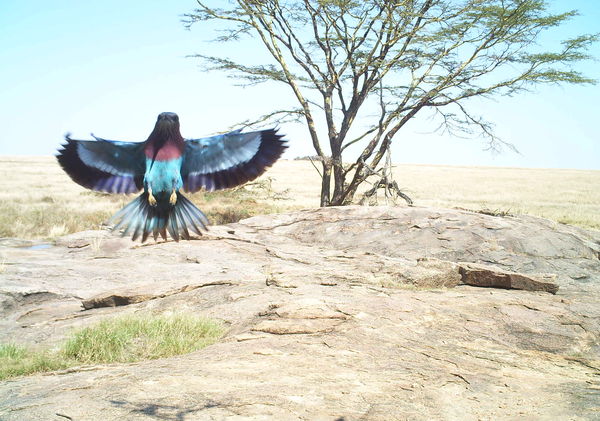
Possibly the most famous of the small bird captures, the sequence ASG0003d4j is quite stunning, as is the bird - a Lilac-breasted Roller, Coracias caudata. Acrobatic and showy in flight, they can be seen conspicuously hawking from high perches throughout Sub-Saharan Africa. The European Roller (Coracias garrulus) are winter migrants in the area, similar but the chest and head are all blue.
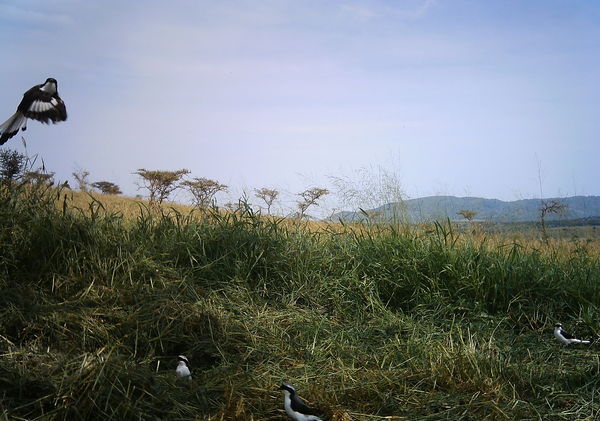
Grey-backed Fiscals, Lanius excubitoroides, are a common social shrike. Their black and white tails are quite distinctive in flight. Similar species include the Long-tailed Fiscal (Lanius cabanisi) with all-black head and tail, and the Magpie Shrike (Urolestes melanoleucus) which is mostly black with white bars on the wings.
Posted
-
 by
wilderzone
moderator
by
wilderzone
moderator
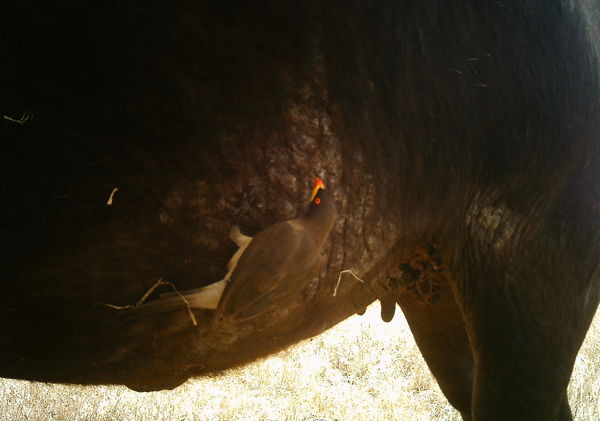
Yellow-billed Oxpeckers, Buphagus africanus, are commonly captured hitching a ride on large grazing animals. They climb all over their host and pick off ticks and other bugs, doing the mammal a big favor. Also common are, Red-billed Oxpeckers, Buphagus erythrorhynchus, distinguished by a completely red bill, yellow ring around the eye, and brown rump.
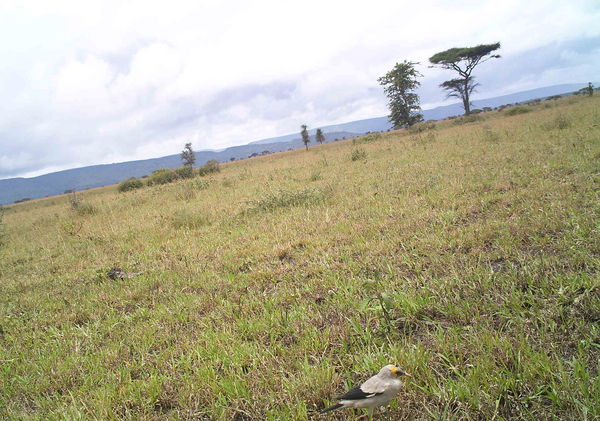
Wattled Starlings, Creatophora cinerea, also often seen hitching rides on big animals, but they are really just using their hosts a perch. Males have a mask of yellow skin and a black wattle - females lack those features but are otherwise similar.
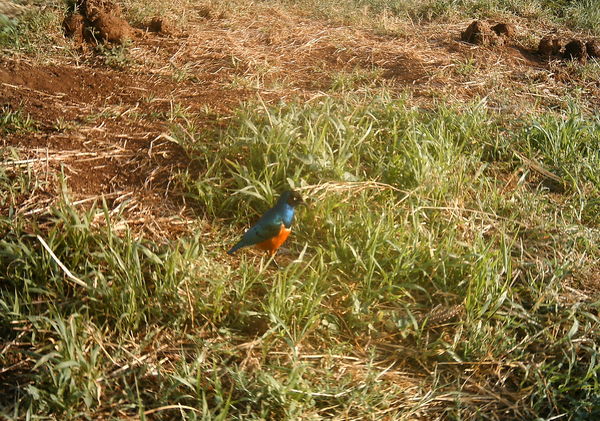
The Superb Starling, Lamprotornis superbus, is true to its name. Very shiny, iridescent blue-green head, wings and tail, rusty red breast with a narrow white band, and piercing white eyes. One similar species in the area is the Hildebrandt's Starling, Lamprotornis hidebrandti, with red eyes and no white band above the rusty breast.
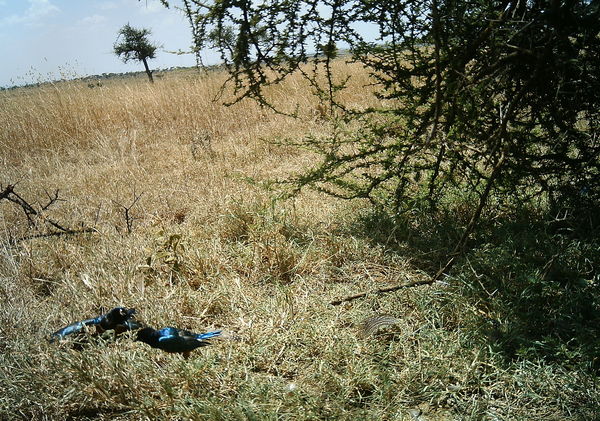
There are two species of all-over glossy blue-black starlings in the area, often difficult to distinguish from the camera trap photos. The Greater Blue-eared Starling, Lamprotornis chalybaeus, (shown here) is more blue-green. The Rüppell's Long-tailed Starling, Lamprotornis purpurotperus, is more blue-purple and has a tail about twice the length of the Blue-eared.
Posted
-
 by
wilderzone
moderator
by
wilderzone
moderator
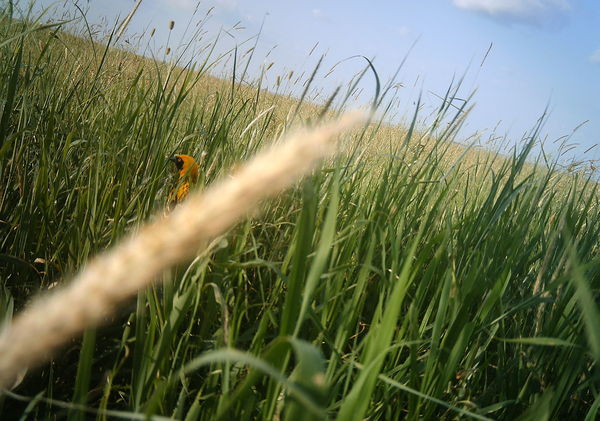
Several species of gold and black weavers live in the Serengeti - all make nests woven from grass and suspended from trees. You may have come across some of their conspicuous nests in the camera traps. This species is the Vitielline Masked Weaver, Ploceus velatus. The Lesser Masked Weaver, Ploceus intermedius, is very similar but with a bit more of a black cap. The Black-headed Weaver, Ploceus cucullatus, is larger, has more black cap, and darker black bands on its wings.
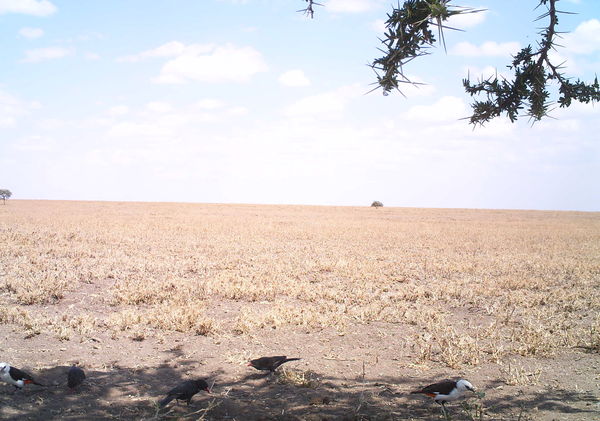
This snapshot features both species of Buffalo-weavers in the area: the White-headed Buffalo-weaver, Dinemellia dinemelli, and the Red-billed Buffalo-weaver, Bubalornis niger. I'm sure you can tell which is which from the names.
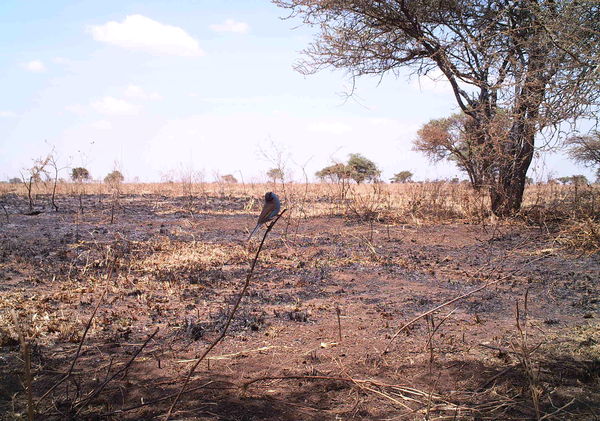
This tiny Red-cheeked Cordon-bleu, Uraeginthus bengalus, is probably the smallest bird the camera traps have managed to get a clear picture of. These little finches are relatively common in the pet trade. The males have a red patch behind the eye. Similar to these, but with red breasts instead of sky blue, are the Red-billed Firefinches, Lagonsticta senegala.
Posted
-
 by
wilderzone
moderator
by
wilderzone
moderator
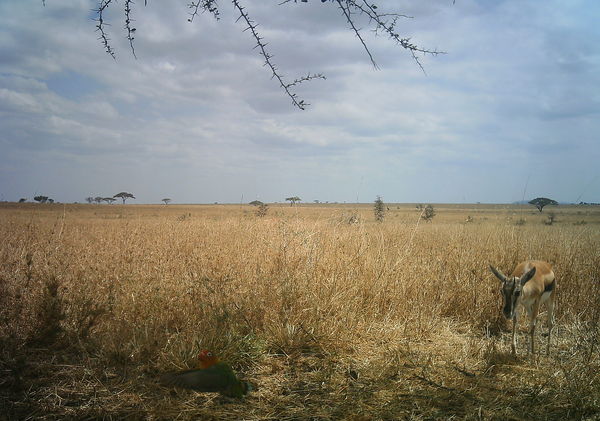
Just came across the first parrot that's good enough for an ID. This is a Fischer's Lovebird, Agapornis fischeri. There are a couple other larger parrots that might be seen in the area, but this species is the most common.
Posted